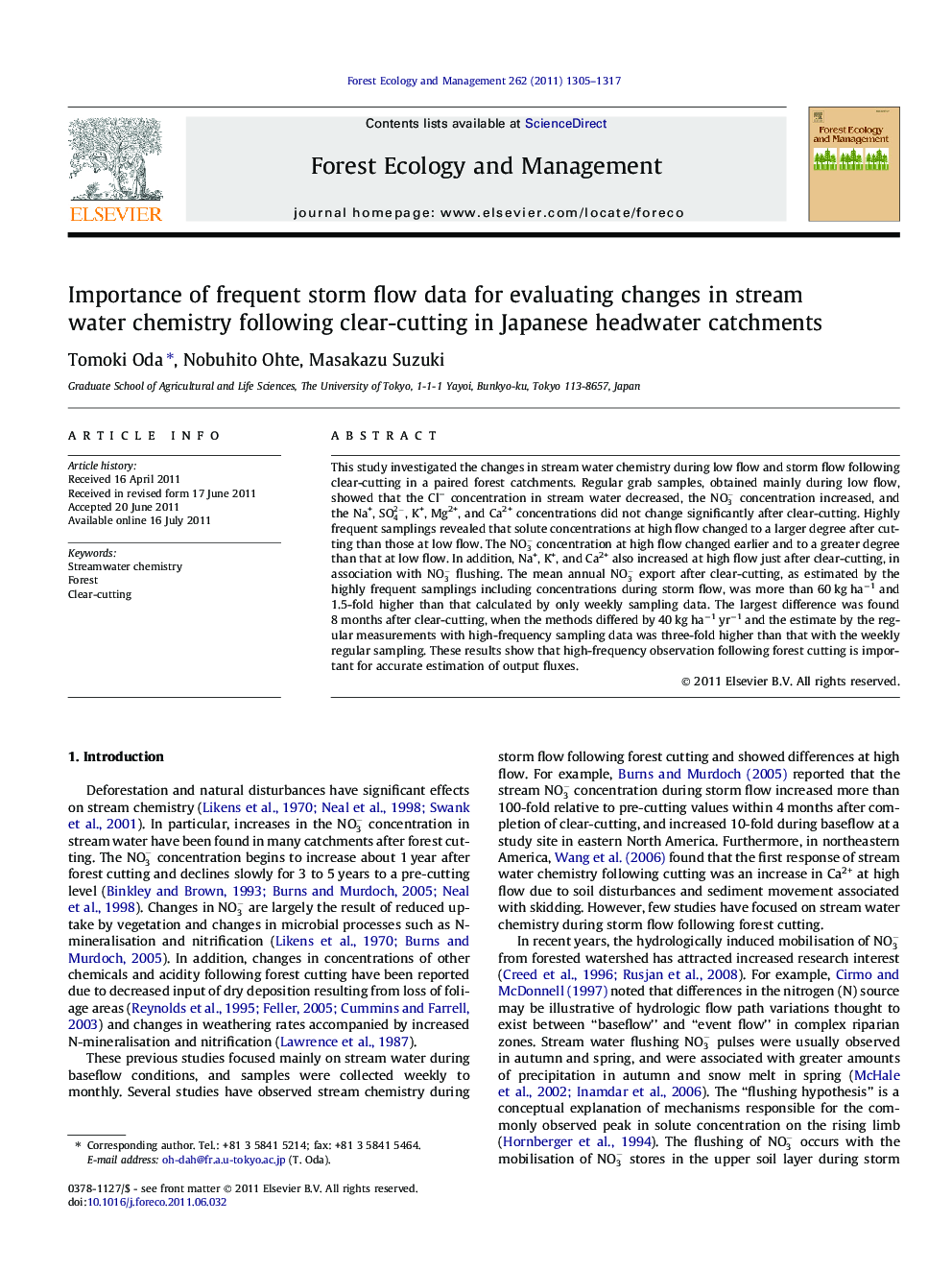| Article ID | Journal | Published Year | Pages | File Type |
|---|---|---|---|---|
| 88006 | Forest Ecology and Management | 2011 | 13 Pages |
This study investigated the changes in stream water chemistry during low flow and storm flow following clear-cutting in a paired forest catchments. Regular grab samples, obtained mainly during low flow, showed that the Cl− concentration in stream water decreased, the NO3- concentration increased, and the Na+, SO42-, K+, Mg2+, and Ca2+ concentrations did not change significantly after clear-cutting. Highly frequent samplings revealed that solute concentrations at high flow changed to a larger degree after cutting than those at low flow. The NO3- concentration at high flow changed earlier and to a greater degree than that at low flow. In addition, Na+, K+, and Ca2+ also increased at high flow just after clear-cutting, in association with NO3- flushing. The mean annual NO3- export after clear-cutting, as estimated by the highly frequent samplings including concentrations during storm flow, was more than 60 kg ha−1 and 1.5-fold higher than that calculated by only weekly sampling data. The largest difference was found 8 months after clear-cutting, when the methods differed by 40 kg ha−1 yr−1 and the estimate by the regular measurements with high-frequency sampling data was three-fold higher than that with the weekly regular sampling. These results show that high-frequency observation following forest cutting is important for accurate estimation of output fluxes.
► We evaluate the effects of clear-cutting on streamwater chemistry with high-frequency monitoring. ► This study found that high flushing NO3- and other cations during the immediate post-cutting period. ► This study showed that the frequent sampling data is important to accurately estimate the export of solutes after cutting. ► Catchment hydrology contributed to the transport of nutrients to the stream water after cutting.
